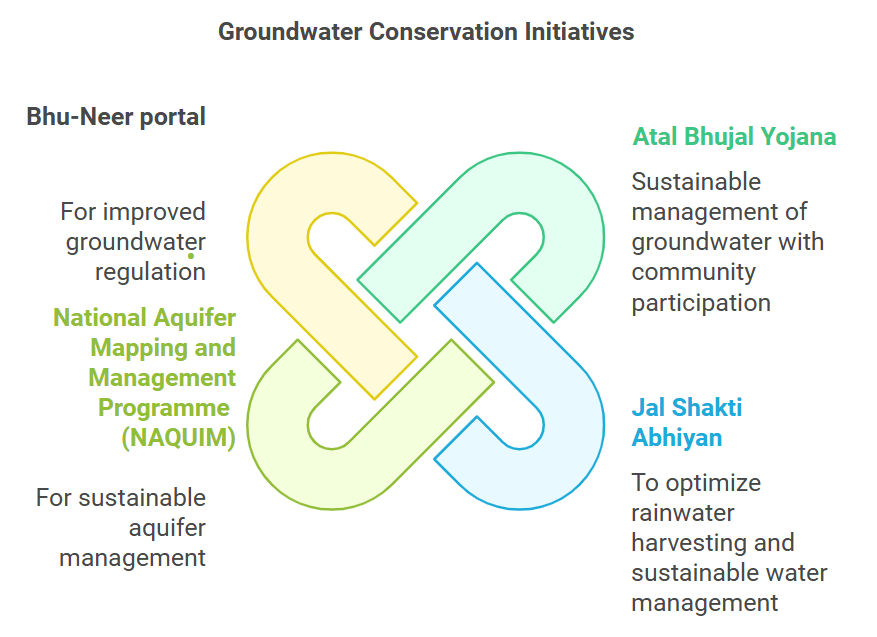For the first time, this report introduced Standard Operating Procedure for groundwater quality monitoring, ensuring uniformity in data collection, analysis and interpretation.
Status of Groundwater

- India is the largest groundwater user in world (more than 25% of global total).
- 87% groundwater extracted is used in agricultural sector and about 11% in domestic sector.
Key Highlights
- Regional Variability: 100% of water samples met BIS standards in Arunachal Pradesh, Mizoram, etc.
- While Rajasthan, Haryana, and Andhra Pradesh faced widespread contamination.
- Irrigation Suitability: Arunachal Pradesh, Assam, Tripura and others have excellent category water for irrigation.
- Andhra Pradesh, Gujarat, Haryana etc. fall in very high sodium range and are unsuitable for use in irrigation practices.
- Specific Contaminants of Concern: Nitrate (Rajasthan, Tamil Nadu, and Maharashtra), Fluoride (Haryana, Karnataka), Arsenic (floodplains of Ganga and Brahmaputra rivers); Uranium (Rajasthan, Punjab).
Key factors contributing to decline in groundwater quality
- Industrialization: Discharge of untreated industrial waste, including heavy metals, chemicals, and solvents.
- Agricultural Practices: Excessive use of fertilizers and pesticides in farming.
- Urbanization: Due to improper waste disposal, sewage leakage, and landfill contamination.
- Climate Change: Changes in precipitation patterns and over-extraction affect replenishment of aquifers.



